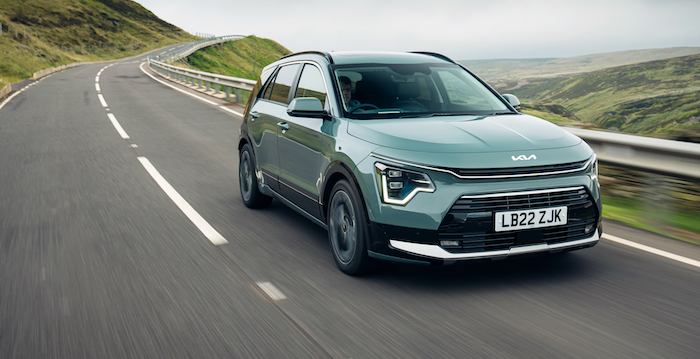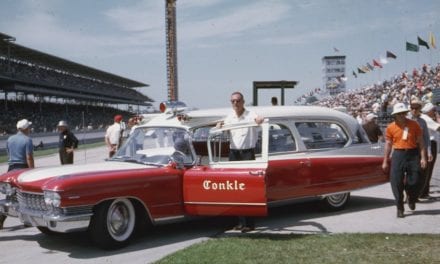Improved Quality and Style
This is the all-new second generation Kia Niro, a hugely important car for Kia. Here in the UK, with around 78,000 sold, it’s their second biggest selling model after Sportage. The new Niro is 65mm longer, 20mm wider and 10mm taller with a 20mm longer wheelbase.
The Electric only version of the Niro – or the E-Niro as it was previously called – accounted for a nearly a third of sales. Crucially an electric version of this new Niro will arrive a little later in the year, but right now in the showrooms you get the hybrid and plug-in hybrid versions.
Both feature a 1.6-litre petrol four-cylinder engine driving the front wheels through a six-speed dual clutch auto – with no reverse gear. Hey? What? Well losing reverse gear saves just over 2kg. So, do you have to get out and push it backwards? No, don’t worry, the electric motor does the reversing. Which is particularly pleasant if you’re backing it into your driveway as there would be no tailpipe emissions at all.
The hybrid is paired with a 32kW motor for a total output of 139bhp and 265Nm of torque and the Plug-in with a 62kW motor for a total of 180bhp and 265Nm of torque. The plug-in also has an electric-only driving range of about 40 miles.
In terms of performance Kia quote 0-62mph acceleration in under 11 seconds for the hybrid and under 10 seconds for the plug-in, while top speed is about 100mph. For fuel consumption you’re looking at well over 64mpg for the hybrid and up to 106g/km CO2 emissions.
Figures for plug-in hybrids are always a little skewed, and in this case up to 350mpg is claimed along with 22g/km CO2. But with plug-in hybrids I find it depends on how they are driven. Keep them plugged in at home and drive them only for short commutes and you’ll easily see these figures as they’ll run primarily on EV power most of the time. However, take a longer journey and consumption will drop to levels similar to the hybrid.
Prices start at just under £28,000 and go up to just under £40,000. And there’s three trim levels – basically numbered, 2, 3, and 4. The one seen in these pictures is a Hybrid (HEV) ‘4’ and I also drove a PHEV 4.
While a typical SUV silhouette, there are some striking characteristics and details in the design when viewed in isolation. The trademark Kia ‘Tiger Face’ is extended into the front wings, and the headlights are said to replicate the lines of a heartbeat monitor. Kia also claims an ‘Opposites United’ design ethos focussing on the ‘Joy of Reason design theme’. Whatever that means, the fact is that it does stand out, and we haven’t even got to the extraordinary C-pillar yet which features a blade not dissimilar to what was seen on the original Audi R8. On the Niro this channels air through, improving aerodynamics.
Staying at the back, open the boot and you’ll find 451 litres of space with more if you fold down the rear seats. And you can adjust the floor to a lower setting, plus there is some stowage space underneath. On the plug-in hybrid, because of the larger battery, you do lose some space and only 348 litres of cargo capacity is claimed.
There is an astonishing amount of room in the rear seats even for my tall frame and long legs, with the experience further enhanced by USB-C sockets on the side bolster of each front seats, an additional power supply, heated rear seats and twin rear vents.
Upfront, things are even more comfortable and spacious – and eco-friendly. They’ve apparently used a substantial selection of sustainable materials: the headlining is made from recycled wallpaper, the seats are made from Bio PU leather with Tencel from eucalyptus leaves and there’s environmentally-friendly paint on the doors. The variety of trim and the styling detail is quite enchanting for a car of this type. And if that won’t work, maybe the 64 combinations of mood lighting will help?
But how do they drive? The performance is brisker than the figures suggest, the steering is nicely weighted, the brakes linear, and the handling is neutral and safe. This is not a sporty thing, despite the ‘Sports’ mode and astonishing sports graphics the all-digital instrument panel switches too, though the throttle pedal and transmission does react better. There are also paddleshifts, but the dual-clutch auto is so good, there’s nothing really to be gained from using them.
In the plug-in hybrid these don’t actually change gears at all, but instead modulate the amount of ReGen available to help charge the battery, and by effect also provide more lift-off braking, so you’re almost on one-pedal mode if you choose the maximum setting. Most of the time the Plug-In drives in EV, except when you select ‘Sports’ which locks out the regen too.
The ride on both cars is very impressive, and this combined with the refinement, ease of driving and usage, quiet quality and high specification is what really leaves a strong impression with this car. If you can charge at home, get the plug-in, if not the hybrid is strongly recommended. This is a great urban family vehicle that has levelled up in terms of kit and showroom appeal. Can’t wait to try the EV version later in the year.
BrownCarGuy.com
YouTube.com/BrownCarGuy
Facebook.com/BrownCarGuy
Instagram.com/ShahzadSheikh
Twitter.com/Shahzad_Sheikh











